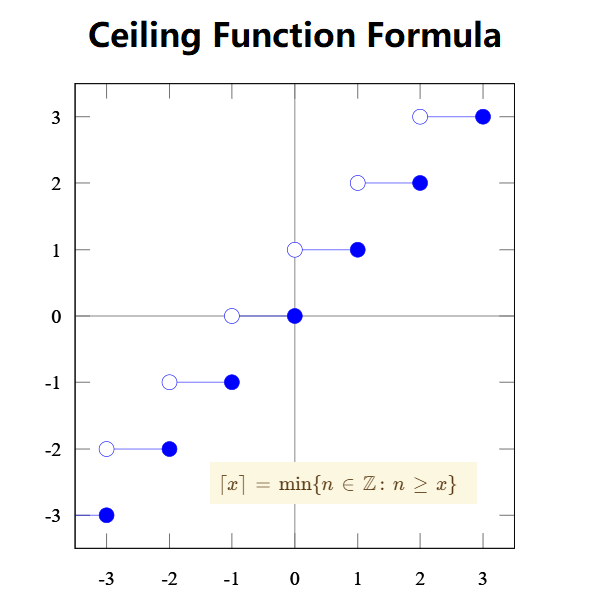 Home
Home
 Back
Back

Definition: This calculator computes the ceiling value of a number, which is the smallest integer greater than or equal to the input number, denoted as \( \lceil x \rceil \).
Purpose: It helps students, programmers, and professionals quickly determine the ceiling value of any number, useful in mathematics, computer science, and real-world applications.
The calculator uses the ceiling function:
Where:
Steps:
The ceiling function is crucial for:
Example 1 (Positive Decimal): Calculate the ceiling of a positive decimal number:
Example 2 (Negative Decimal): Calculate the ceiling of a negative decimal number:
Q: How is the ceiling function different from rounding?
A: The ceiling function always rounds up to the next integer, regardless of the decimal part, while rounding typically rounds to the nearest integer (e.g., \( \text{round}(3.7) = 4 \), but \( \text{round}(3.4) = 3 \)).
Q: What happens if the input is an integer?
A: If the input is an integer, the ceiling value is the same as the input (e.g., \( \lceil 5 \rceil = 5 \)).
Q: How does the ceiling function handle negative numbers?
A: For negative numbers, the ceiling function rounds to the nearest integer greater than the number (e.g., \( \lceil -2.3 \rceil = -2 \), not \(-3\)).